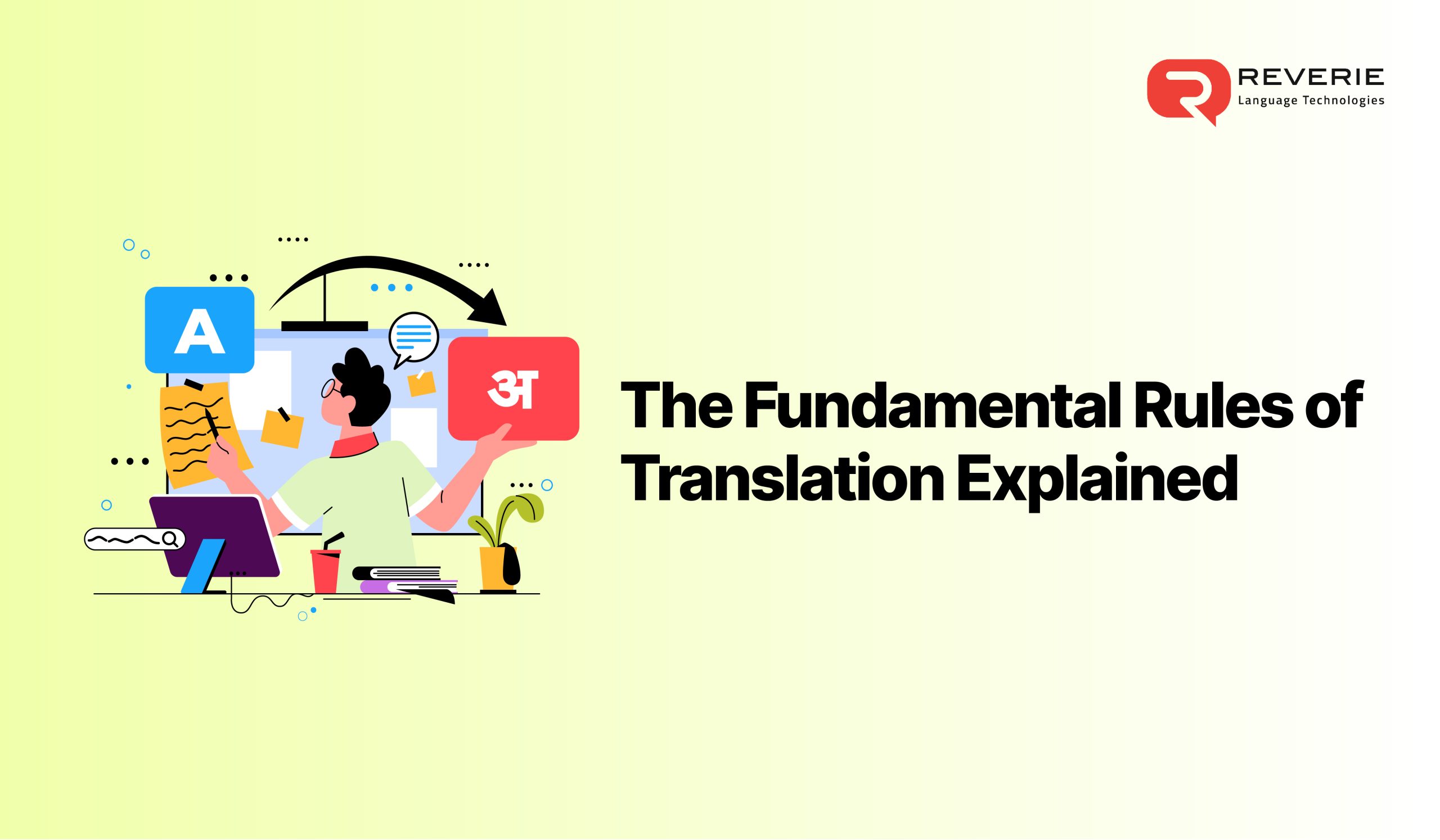The Fundamental Rules of Translation: It’s More Than Just Words
Let’s be real—translation is hard. It’s not just about turning words from one language into another. It’s about making sure the meaning, emotion, and intention stay intact, no matter the language.
Imagine trying to explain something as simple as “Break a leg” to someone who’s never heard the phrase before. Without context, it’s just confusing. And that’s what translation is—balancing the literal and the cultural to make sure nothing gets lost.
So, how do you do it right? Let’s talk about the unspoken (and spoken) rules of translation.
Rule 1: Translation is a Craft, Not a Copy-Paste Job
Translation isn’t robotic—it’s human. It’s part skill, part art.
Think of it like this: A user manual for a piece of tech? That needs cold, hard accuracy. But a poem? That’s where creativity steps in.
Good translators know when to stick to the facts and when to let the words flow. Ask yourself: Am I sticking to the rules or breathing life into the text? Sometimes, you’ll need to do both.
Rule 2: Context is Your Best Friend
Here’s a fun thought: Words don’t mean much without context. A phrase like “Break a leg” only works when you understand it means good luck.
Without context, you’re just guessing. And let’s face it—nobody likes a wild guess in translation. So before you start translating, dig deeper. What’s the text really trying to say?
Rule 3: Know Your Audience
Translation isn’t about impressing linguists; it’s about connecting with people.
If you’re working on a legal contract, sure, stick to the script. But if it’s a catchy ad campaign? You’ve got to think about what’ll land with the audience. Nike’s “Just Do It” is a perfect example. A literal translation might sound clunky, but a reimagined version could pack the same punch.
Keep asking yourself: Who am I talking to, and how can I make this click for them?
Rule 4: There’s No Such Thing as ‘Untranslatable’
Ever stumbled across a word that doesn’t seem to have an equivalent in another language? Words like “hygge” (cozy comfort) or “wabi-sabi” (finding beauty in imperfection) can seem impossible to translate.
But here’s the secret: They’re not. You just need to be creative. Instead of a direct swap, think of how you can describe the feeling or the idea behind the word.
Challenge: What’s the one word you’ve struggled to translate? How did you make it work?
Rule 5: Use Tech, but Keep It Human
AI tools like Google Translate or fancy neural machine translation software can churn out quick results, but they don’t get the nuances. They can’t feel it. They can’t understand culture.
These tools are great for a starting point—but they’re just that: a start. The final touch? That’s all you.
Rule 6: Follow the Rules... Until You Don’t
Sometimes, the best translations happen when you break the rules.
Take Coca-Cola’s infamous entry into China, where a literal translation of its name initially meant “bite the wax tadpole.”It took some creativity to come up with a better name—one that resonated with the culture and captured the brand’s essence.
The trick? Know when to stick to the script and when to rewrite it.
Rule 7: It’s Not Just Translation, It’s Localization
A one-size-fits-all approach doesn’t work.
If you’re reaching out to a global audience—or even a multilingual market like India—you need to go beyond translation. You need to localize. That means understanding cultural sensitivities, regional slang, and even what payment methods people prefer.
Question to reflect on: Are you making your content feel personal for every audience, or just running it through a translation mill?
The Heart of Translation
Translation isn’t just about languages—it’s about people. It’s about telling stories in ways that connect, inspire, and make sense to someone who might never read the original text.
At its core, translation is about building bridges. And every word you choose either strengthens or weakens that bridge. So, take your time, ask the right questions, and always, always remember the audience.
Faqs
What are the fundamental rules of translating content into Indian languages?
Translating into Indian languages requires more than just linguistic knowledge. The key rules include understanding regional context, maintaining cultural sensitivity, adapting tone and style, and choosing the right dialect (e.g., Hindi for UP may differ from Hindi for Bihar). It’s about ensuring the content feels authentic to the audience.
Why is context crucial for translating Indian phrases or idioms?
Indian languages are rich in idioms and phrases that don’t always have direct translations. For instance, “Chhati thokna”(Hindi) can’t be translated literally as “thumping one’s chest.” It signifies boasting or taking pride. Without context, the essence of such phrases may get lost, leading to confusion or miscommunication.
What is localization, and why is it important in the Indian context?
Localization means tailoring content to fit regional nuances, cultural references, and linguistic variations. India’s diversity makes localization essential. For example, translating an e-commerce site into Tamil isn’t enough—you may also need to adapt visuals, currency formats, and even product descriptions to match Tamil Nadu’s cultural context.
Can all Indian words or cultural concepts be translated accurately?
Not always. Some Indian words like “jugaad” (a frugal innovation or clever fix) don’t have a direct equivalent in English or other languages. Instead of literal translation, it’s better to explain or creatively adapt such concepts to retain their meaning and appeal to the target audience.
Are machine translation tools effective for Indian languages?
Absolutely! With advanced solutions like Reverie’s NMT (Neural Machine Translation), translating Indian languages just got a whole lot smarter. Unlike generic tools, Reverie’s NMT truly gets the nuances of our rich linguistic diversity. For example, if you’re translating something like “Bhai, kya scene hai?” (Hindi slang for “What’s the plan?”), it captures the context and meaning perfectly, so it feels natural. Reverie’s tech isn’t just about word-for-word translation—it’s about creating connections that actually make sense to your audience.


